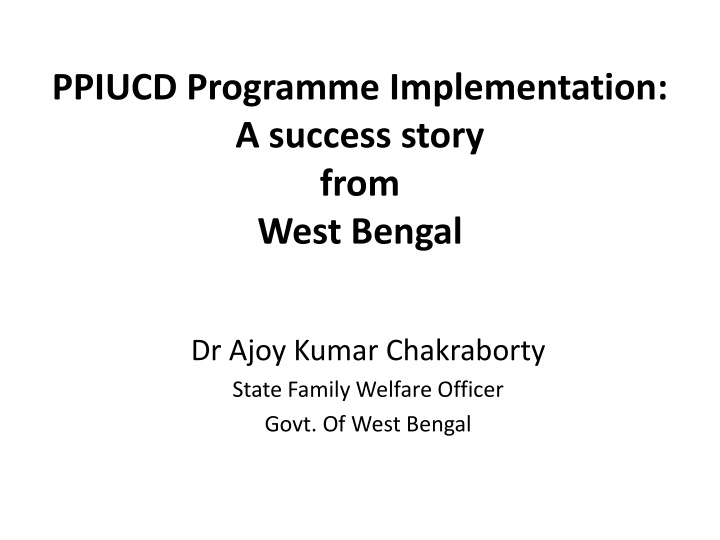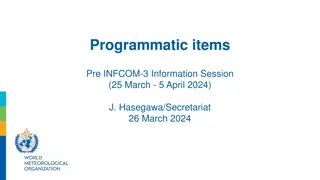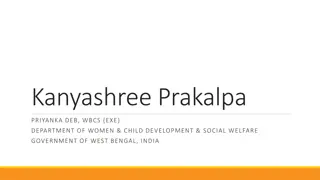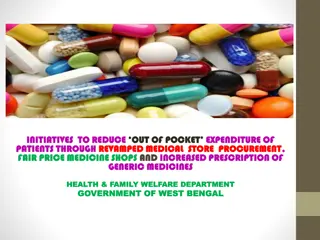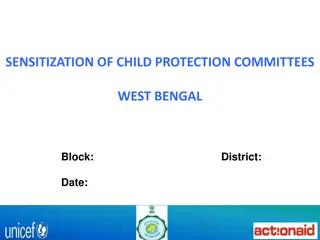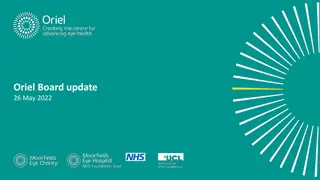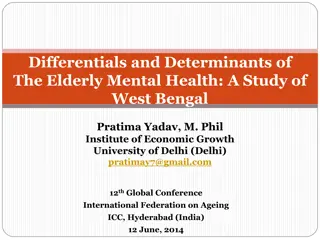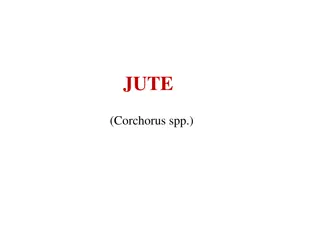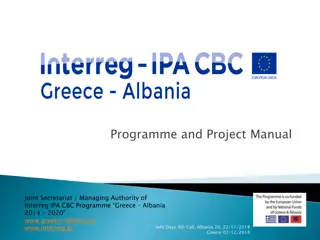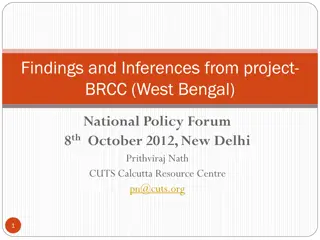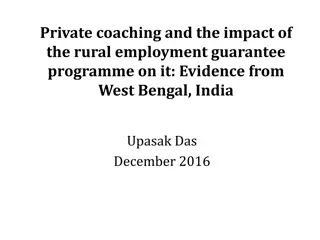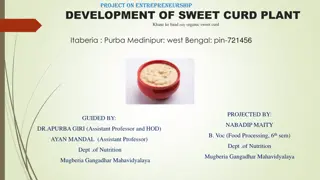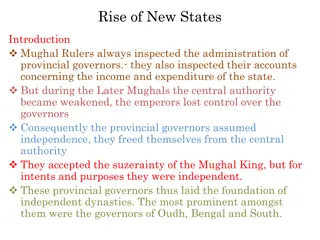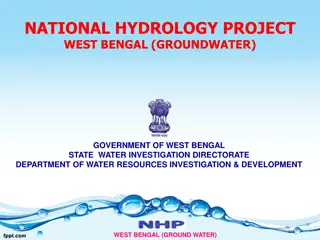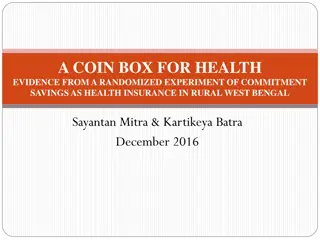Success Story of PPIUCD Programme Implementation in West Bengal
West Bengal aimed to increase IUCD prevalence and reduce OCP dependency. The implementation involved gap identification, stakeholder meetings, and training for providers. Challenges included inadequate logistics support and low motivation among service delivery staff. Intervention focused on strengthening the supply side through training motivated gynaecologists for PPIUCD, resulting in improved program performance.
Download Presentation

Please find below an Image/Link to download the presentation.
The content on the website is provided AS IS for your information and personal use only. It may not be sold, licensed, or shared on other websites without obtaining consent from the author.If you encounter any issues during the download, it is possible that the publisher has removed the file from their server.
You are allowed to download the files provided on this website for personal or commercial use, subject to the condition that they are used lawfully. All files are the property of their respective owners.
The content on the website is provided AS IS for your information and personal use only. It may not be sold, licensed, or shared on other websites without obtaining consent from the author.
E N D
Presentation Transcript
PPIUCD Programme Implementation: A success story from West Bengal Dr Ajoy Kumar Chakraborty State Family Welfare Officer Govt. Of West Bengal
Background And Objective The State of West Bengal has reached the Population Replacement Level long back. Current TFR (1.6)1is one of the lowest in the country But the contraceptive choice by the Couple is not appropriate Out of mCPR of 57% in the State2 NSV(0.1%) and IUCD (1.2%) rank among the lowest OCP (20%) is the most popular spacing method despite contraindications and long-term side effects. Therefore, state decided to promote IUCD with an objective to achieve at least 15% prevalence by the year 2020 and reduce OCP dependency 1 SRS 2015; 2NFHS-4 2
Methodology We performed a retrospective data review on Coverage of IUCD &PPUCD against Institutional Delivery Field visit conducted during 2015-16 for gap assessment in implementation of IUCD & PPIUCD Meetings conducted at all levels with key stake holders Providers (Gynaecologists, Staff Nurses, ANMs), ASHAs Community members, antenatal mothers and couples as potential acceptors Gaps identified in both the Supply side(Providers) as well as demand side (Potential acceptors for PPIUCD) GOI programme guidelines and protocols were adhered to Monitoring and supportive supervision was strengthened at all levels to improve the program performance 3
Results: Gap Identification Short-comings found in terms of involvement, knowledge and skills on the part of clinical service providers The motivation of the gynaecologists, MO s & trained GNMs for PPIUCD were low The involvement of RMNCH+A counsellors was minimal ANMs and ASHAs had limited understanding of side effects and its management Logistics support like PPIUCD forceps and training mannequins were not adequate Irregular disbursement of incentive especially for IUCD and PPIUCD resulted in low motivation among service delivery staff Community had limited information specially on IUCD and various myths associated with it 4
Intervention: Strengthening Supply Side Motivated Gynaecologists from each district and Medical colleges were selected We trained and motivated them for PPIUCD. They further conducted quality trainings for the MO and GNM at high delivery case load facilities During trainings emphasis was given on counselling & obtaining consent from the beneficiary All the 47 counsellors posted at Medical colleges, districts hospital and SDH were trained In order to improve PPIUCD insertions in high case load hospitals The state procured the mannequins, Kelly s forceps; GOI ensured continuous supply for increased IUCD demand 5
Intervention: Scaling up supply & Community Demand Supportive supervision and monitoring was strengthened and incentive disbursement was regularised The programme at the next level was rolled-out at the CHC level ANMs were uniformly trained at Block level by Video conferencing from state to handle minor side effects and ensure quality follow up Follow up sessions focused on counselling for adherence and community acceptance of IUCD ASHAs were trained on IPC to address misconceptions prevailing about the method Counselling for PPIUCD during all antennal visits was emphasized 6
Follow up for Sustainability Feedback was given to all stake holders on regular basis to boost their motivation Some districts started improving performance; their successful strategies were shared with others and healthy competition was initiated Both IUCD and PPIUCD performance were improved substantially over a period of two years IUCD increased from 1.37 lakh during 14-15 to 1.76 and in 15-16 Rs.2.07 lakh in 16-17 PPIUCD insertions experienced a boost from 5,800 to 27,000 and to 1.94 lakh during the corresponding period 7
Performance of Interval IUCD and PPIUCD in Public Sector of West Bengal over last 5 years 450000 400000 350000 PPIUCD Interval IUCD 300000 250000 200000 150000 207416 100000 176489 137067 105938 105615 50000 0 FY 12-13 FY 13-14 FY 14-15 FY 15-16 FY 16-17 8
Discussion: The Key Intervention The gap assessment was the Key to understand the scenario and planning for appropriate action Addressing the Providers Gap The highest quality of training was ensured by involving Medical Colleges. Initially only one Medical College, gradually involved seven more Identifying the motivated Gynaecologists of the District Hospitals quickly disseminate ownership Linkage between Medical College, Dist Hospital and CHC strengthened through training partnership and hand holding support established 9
Discussion: The Key Intervention Addressing the Logistic Gap Uninterrupted logistics supply was ensured through intensified supply chain management Mannequins and PPIUCD forceps were procured and distributed adequately for training and service Addressing the Demand Gap Quality follow ups by ANMs build confidence of the community Intensive counselling by ASHAs helped community specially the antenatal mothers to adopt correct choice and dispelling myths and wrong perception associated with IUCD 10
Discussion: The Key Intervention Addressing the Motivation Gap The individual performances were monitored and regular reviews at State, District and Block levels helped to identify gaps for correction and keeping up motivation levels of all stakeholders including administrators Districts were appreciated and performers were rewarded to create a healthy and competitive environment Fund disbursement was regularised through monitoring to keep the ASHA and the providers upbeat 11
Discussion: The Limitation Involvement of the Districts Three districts and four Medical Colleges are lagging behind, special focus initiated this year 12
Conclusion : Achievement of the Objective The success achieved following the GOI programme Guideline With successful implementation of the PPIUCD in the State, an ambitious performance is expected to cover 3.5 lakh PPIUCD in addition to over 2 lakh interval IUCD in the 17-18 FY Maintaining that performance in the subsequent years will add about 4.7 lakh new accepters per year This will help to increase the pool of IUCD accepter by 18 lakh over next four years to achieve the objective of 15% IUCD prevalence among 1.65 crore couple of the State by the year 2020. 13
Conclusion: Scalability The GOI Programme guideline is sufficiently designed to achieve the desired objective Gap identification, appropriate planning and intervention are the key activities Monitoring, uninterrupted supply, recognition of good work and creation of healthy environment are the key for sustainability 14
